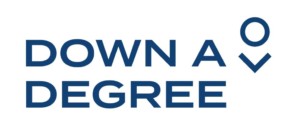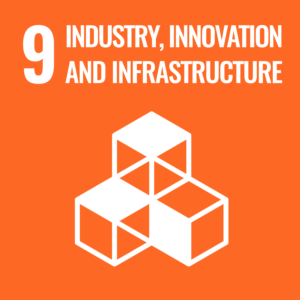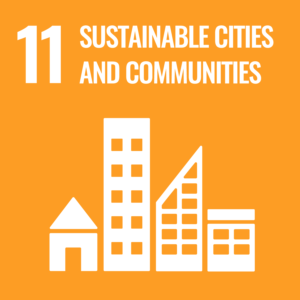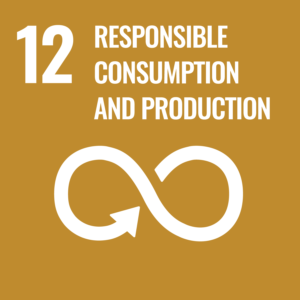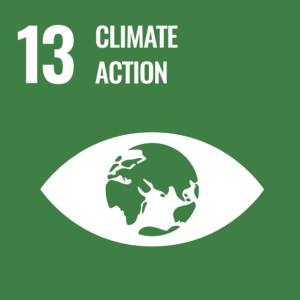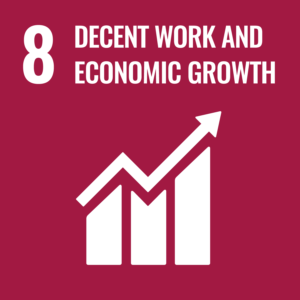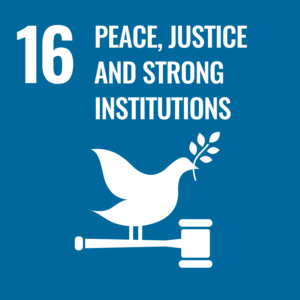
Sustainability Report 2022
Contents
Business Model
Lehto is a forerunner of a better tomorrow. We are driven by the need to be ahead of our time and reinvent the construction industry – and in this way to generate value, a better tomorrow for our customers: high-quality, affordably-priced, fast and ecological construction. We create ingenious homes, successful business premises, functional care homes and schools. The key competitive elements that enhance productivity are design management, repeatable solutions, industrial production and harnessing digitalisation. Lehto’s goal is to build efficiently and save resources, and to reduce the material waste generated in construction.
The company operates in two service areas: Housing and Business Premises. In 2022, Lehto had factories in four municipalities. These factories produced large roof elements, wall elements, bathroom and kitchen modules, housing modules, building technology centres, renovation elements, doors and windows, and fixtures. The largest units are located in Oulainen and Hartola. All of our factories are located in Finland, and the bulk of our outsourcing is contracted in Finland and the European Union.
Thanks to our efficient factory construction, Lehto Group is able to reduce building and housing costs and offer people reasonably priced homes with excellent travel connections – even in growth centres. 1392 new housing units and 14 new business premises were completed in 2022.
In 2022, Lehto had 860 employees on average. The number of employees declined by 183 largely due to changes in the business environment and due to sales of pipeline renovation business. The total turnover was 26.1% (2021: 23.6%). At the end of the year, there were 664 active employees, of whom 541 (81.5%) were men and 123 women (18.5%). The share of employees in the total personnel (278/41.9%) decreased slightly in relation to the number of white-collar workers (386/58.1%). Employees in permanent employment relationships accounted for 97.9 per cent (650) of personnel. In fixed-term employment (14/2.1%), the most important reasons were internships, project work or other agreed fixed-term work tasks or substitutes that were part of the studies.
Highlights 2022
We are aiming for energy savings of about 15 per cent on our construction sites
Down a Degree is a government energy-saving campaign in which Lehto is also involved. We are taking a broad range of action to develop more energy-efficient heating and lighting practices, and particularly those related to construction. We share good energy-saving practices, and are improving our energy consumption monitoring. An energy manager has been appointed to every Lehto construction site. We are aiming for energy savings of about 15 per cent on our construction sites, and are favouring remote meetings over travel in our offices. We are also seeking to provide our customers with buildings that use more energy-efficient solutions.
Social responsibility in the Sarkola School project
In the Sarkola School project of the City of Kouvola, sustainability and social responsibility themes were respected in the agreement’s terms and conditions of employment, which stated that two long-term unemployed people from Kouvola were to be employed during construction. The school was opened to students in autumn 2022.
Electric vehicles now more common as company cars
These days, an increasing number of Lehto employees are choosing an ecological electric vehicle as their company car. We supported this change by realigning our policy on company cars.
Lehto involved in Green Building Week campaign
World Green Building Week is the largest campaign for a sustainable built environment in the world. It is organised annually by the World Green Building Council, of which Lehto is also a member. This is why we campaigned for a number of things in autumn 2022, such as the right to affordable and healthy housing.The campaign theme #BuildingforEveryone also took future generations into account: everything that we design, produce or build now must be done with them in mind – it must be future–proof.
Espoon Keisari is a good example of ecological wood construction
Lehto Group and the UN’s Sustainable Development Goals
Lehto strives to support the UN’s Sustainable Development Goals. Below, you can read more about how Lehto’s business is linked to the UN’s goals.
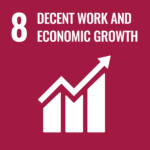
In particular sub-goals 8.2, 8.4 and 8.8
Lehto wants to be a forerunner in building a better tomorrow and innovatively reinventing the construction sector. The key tools in our drive to reinvent the construction industry and improve productivity are strong design management, industrial manufacturing and harnessing digitalisation. By utilising modular construction and other innovations, Lehto aims to make construction faster, more affordable, higher in quality, and more ecological.
Lehto is seeking to run a more resource-efficient business, through both industrial prefabrication and other activities. Construction has many environmental impacts through the value chain associated with manufacturing construction products, and also while buildings are occupied. These can all be influenced through procurement. The life cycle energy consumption of buildings is reduced by making them energy-efficient.
Lehto actively seeks to ensure that its employees have a safe and pleasant working environment. Accident prevention is a top priority. Regular personnel surveys are used to monitor the working environment. Most employment contracts are permanent. Lehto provides its employees with more extensive healthcare services than required by law and, for example, also offers leisure-time accident insurance. Lehto has a career promise for students.
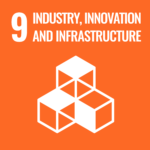
In particular sub-goals 9.1, 9.2 and 9.4
Lehto seeks to produce more affordable housing in new apartment buildings, so that people have the opportunity to live in a good quality new home in a growing urban area – including many of those who can’t afford new housing in more expensive price ranges.
Lehto leverages industrial prefabrication in its construction, and strives for sustainable production at its factories. We directly employ people at our own factories, offices and construction sites, and also provide indirect employment through the products and services we purchase from other companies.
Lehto continually seeks to improve its use of resources. We are always developing our production processes in a more efficient direction, while also reducing their harmful effects on the environment.
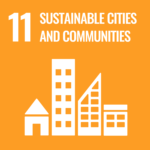
In particular sub-goals 11.1, 11.3 and 11.6.
Lehto wants to provide opportunities for people to live in a safe and more affordable home – including many of those who can’t afford new urban housing in more expensive price ranges.
Lehto’s business is primarily geared towards urbanising areas. We focus our housing construction on locations with good public transport connections.
Lehto seeks to prevent the formation of waste, and we are seeking to reduce the amount and proportion of non-sorted waste.
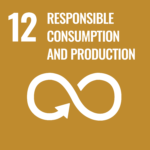
In particular sub-goals 12.2, 12.5 and 12.6
Lehto strives to run its business more efficiently and make more sustainable use of resources by, for example, eliminating waste and using renewable raw materials, such as wood.
The construction sector is a key producer of waste in Finland. In addition to its own waste, Lehto also has the opportunity to influence the waste generated by its subcontractors on construction sites. Over the coming years, Lehto will be actively seeking to increase waste sorting and promote the circular economy. Lehto also raises its customers’ awareness of the environmental impacts of construction projects by, for example, reporting on many sustainability issues.
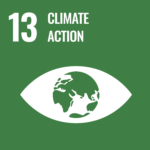
In particular sub-goals 13.1, 13.2. and 13.3.
Lehto seeks to be a forerunner in making the construction sector more climate-proof. The ways we are attempting to achieve this include reducing the carbon footprint of construction, increasing positive climate impacts, and reducing the climate impacts of customers’ premises during occupancy through the use of energy-efficient solutions.
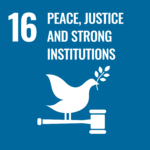
In particular sub-goals 16.5 and 16.6.
Lehto complies with the principles of good governance, and also requires its partners to operate in accordance with the ethical guidelines set out in the Fair Play Rules. Lehto does not accept bribery or corruption. Lehto strives for efficient and responsible operations.
Sustainability management and reporting
Responsibility is one of the values that guides Lehto’s operations. Lehto’s goal is to build efficiently while saving energy and resources, to reduce the material waste generated during construction, and to be a good employer that is fair to everyone. The construction sector will play a significant role in curbing climate change, adapting to it, and reducing the use of non-renewable natural resources. Lehto’s aim is to combine smart and sustainable construction with the benefits afforded by digitalisation. For example, Lehto has developed solutions for wood construction that utilise factory production, which is more ecological and resource-efficient than traditional construction.
At Lehto Group, the CEO is ultimately responsible for environmental issues. Responsibility for practical environmental management is assigned as follows: EVPs of the service areas for construction; the factory production manager for factory production; and the Chief Procurement Officer for centralised purchasing. The HR Director is in charge of responsibility issues relating to personnel. The management team monitors trends in the key indicators of responsibility. Sustainability issues are discussed in management teams as part of both routine business management and development.
Lehto is a member of the Green Building Council Finland cooperation network, as we have also wanted to promote sustainable construction solutions through this avenue. As a member of Green Building Council Finland, Lehto was involved in the 2022 activities of its Construction and Communications Committees.
The Lehto Group monitors sustainability with the aid of three themes that follow an ESG-style breakdown (environment, social and governance). The themes we monitor are: responsible construction, personnel wellbeing, and the responsibility of business practices.
Lehto Group reports to external stakeholders on its responsibility in connection with annual reporting, and our reporting complies with the requirements laid down for non-financial information in the Accounting Act. In this report, the requirements of the Accounting Act are covered in the following sections:
Accounting Act requirement | Location in this report |
Description of the business model | Business Model |
Environmental issues | Responsible construction |
HR issues | Personnel wellbeing |
Social responsibility | Personnel wellbeing |
Anti-corruption activities | Responsibility of business practices |
Human rights | Responsibility of business practices, Personnel wellbeing |
Responsible construction
Construction has environmental impacts not only during construction itself, but also indirectly through the manufacture of construction products and the environmental impacts of using a building. Lehto strives to take this environmental, financial and social responsibility into account in its operations (see the sections Personnel wellbeing and Responsibility of business practices). In practice, Lehto’s goal of reducing harmful environmental impacts means taking a lifecycle approach to buildings and structures by employing lower-carbon solutions and ensuring greater material and energy efficiency.
The most significant environmental risks associated with Lehto Group’s business are related to environmental damage and accidents, the climate, and the use of natural resources. In their construction and demolition work, Lehto Group and its subcontractors handle hazardous substances such as coolants, oils, solvents, asbestos and other materials that, if released into the environment, may cause contamination. Environmental damage may also be caused during the handling of hazardous substances, or as a result of errors or negligence in their treatment or disposal. In all of its activities, Lehto seeks to ensure that its business complies with all current environmental legislation. Factories and construction sites have developed practices, guidelines and plans to support the management of environmental risks.
Global environmental challenges
The global environmental challenges that have been most prominently discussed in recent years include climate change, the overconsumption of natural resources, and a loss of biodiversity. These things are all interlinked, so that climate change and the overconsumption of natural resources may, for instance, intensify loss of biodiversity. In the UN’s Convention on Biological Diversity, the key themes for preventing loss of biodiversity have been identified as the protection and restoration of ecosystems; climate change mitigation; action to combat pollution, the spread of invasive species and overconsumption; the production of more sustainable products and services; and a reduction in consumption and waste. Authorities in Finland are already working to take the needs of endangered flora and fauna into account during zoning.
Through its operations, Lehto can have a positive impact in all of these areas from the consumption of natural resources to mitigating and adapting to climate change, producing more sustainable products and services, reducing waste, and promoting the circular economy (which is related to all of the aforementioned).
Climate change
According to a Greenhouse Gas Inventory published by Statistics Finland, almost three quarters of Finland’s annual greenhouse gas emissions are caused by energy production and consumption. Buildings are major consumers of energy. According to an estimate by the Ministry of the Environment, the built environment causes about a third of Finland’s greenhouse gas emissions when indirect emissions are also taken into account. Emissions from buildings are often assessed as a lifecycle carbon footprint, which is determined by taking into account the manufacture of their construction materials, construction itself, and emissions from the building’s occupancy phase and demolition. Buildings use energy, and the emissions that are caused by its production have also been classed as emissions from the built environment. Both the State and many municipalities are employing measures to promote lower-carbon construction.
Lehto’s climate risks
Lehto’s climate risks can be considered to include changes in thermal loads, and extreme weather conditions that may impact the operational capacity of construction sites. Climate risks are also political risks, through factors such as legislative amendments that may be made at short notice; fluctuations in the prices of energy, transport and raw materials due to potential changes in emissions requirements or taxation linked to climate impacts; and changes in customers’, financiers’ or stakeholders’ behaviour with respect to the climate. Changes in how the greenhouse gas emissions of construction projects are calculated can also be considered a climate risk of sorts, that is, if these changes have an impact on what kind of buildings will actually get built. Finland has also been preparing new legislation in this area. Climate perspectives may also be reflected in zoning.
Mitigating climate change
For Lehto, there are also favourable business opportunities associated with mitigating and adapting to climate change. Lehto’s way of building – with its integrated technical solutions and operating methods – aims for more resource-wise solutions and a reduction in construction material waste. For example, factory prefabrication has enabled more widespread use of cut-to-size construction products and more efficient logistics. Circular economy principles are also easier to apply during indoor manufacturing at factories. One practical example of this is that we return offcuts of certain construction materials to the manufacturer for reuse. Promoting the reuse of materials can also help to reduce the consumption of natural resources. Wood-based materials, such as the timber used in Lehto’s wooden apartment buildings, can act as carbon sinks. By making buildings more energy efficient, we can also reduce the need to use natural resources while a building is in use.
Development in 2022
In 2022, efforts were made to improve waste sorting and recycling. Both the sorting and recycling rates of construction and demolition waste increased compared to previous years. Masses of contaminated soil are not included in the waste identification numbers. Some of the plots have soil materials that have been spoiled as a result of the previous history of the plot.
Lehto strived to implement energy-saving measures in all its service areas and participated in the nationwide Down a Degree energy-saving campaign, which started in the fall of 2022. During 2022, operational floor space in Lehto’s own use was reduced. The use of space could be made more efficient as the workload and number of personnel changed.
Lehto signed up for the Building Life initiative related to reducing greenhouse gas emissions, which aims to work towards a carbon-neutral built environment by 2035. Lehto was also involved in the Climate Indicator project, which aims to promote the reduction of the carbon footprint and the reduction of life cycle costs. In 2022, greenhouse gas emission calculations were prepared for some of Lehto’s construction projects. They examined both product-related and operational phase emissions.
Personnel wellbeing
Employees are the most important asset for Lehto Group’s strategy. Which is why we seek to ensure that our employees have the best possible workplace experience, by ensuring that everyday life runs smoothly in a pleasant atmosphere in which everyone knows what they should be doing.
Our HR development plan and our equality and non-discrimination plan are both based on Lehto’s strategy and take into account any changes occurring in the Group’s operations that may have an effect on the structure, number and professional skills of Lehto personnel.
Cyclical variation in HR requirements is typical of the construction sector, and in 2022 this was reflected in the number of both personnel and ongoing projects. During the year, the personnel adjustments required by business cycles were made through layoffs and the termination of employment contracts. Recruitment clearly focused on replacement hires, and the resulting personnel turnaround was higher than in previous years. Depending on the month, Lehto employed between 664 and 921 people. The number of personnel also fell as a result of the divestment of Remonttipartio Oy in June 2022.
Lehto carried out a personnel pulse survey at the turn of August and September. This survey was a continuation to the personnel survey and pulse surveys conducted in 2021. The results revealed that personnel were motivated and cooperation within the Group had improved.
Coronavirus pandemic
The coronavirus pandemic eased during 2022, and was continuously managed with the aid of coronavirus-related pages on the intranet and construction site letters on the topic of occupational safety. HR has been responsible for guidance at offices, and the occupational safety organisation for guidance on construction sites. HR management has coordinated things as a whole.
In 2022, all of our offices continued to use the hybrid work model that was adopted in 2021. Its guidelines are built around an assessment of team-specific needs and opportunities for remote/in-person work. The core of the operating model is 2–3 days of remote work and 2–3 days of in-person work per week, with each team also having the potential to react to changing situations.
Enhancing occupational safety a priority
The accident rate is one of Lehto Group’s key indicators for responsibility and the most important indicator for HR issues, social responsibility and human rights. Lehto Group prioritised occupational safety as a special focal area in 2017 and has continued efforts to improve safety.
Lehto has three employees who work full time on maintaining and developing occupational safety. The Group’s objective is that every day is an accident-free day, and construction sites and factories are orderly and safe. In 2022, the Group’s accident rate was 15 (LTI1 index, 2021: 15). Since 2018, the accident rate has been measured using the LTI1 index (accidents leading to absence from work of more than one day per million hours worked) and this indicator is reported in connection with annual reporting.
Our policy is that all employees in production-related work must have a valid Occupational Safety Card. In addition, the Group arranges training on occupational safety and first aid. Through preventive measures and training, Lehto Group seeks to prevent accidents at work and influence employees’ attitudes.
Safety park training sessions are a permanent part of the development of the Group-wide safety culture. Lehto Group Plc is a partner of the Safety Training Park in Northern Finland. In addition to safety park tours, safety card training was organised for Lehto personnel at the safety park in 2022. Safety issues are also an integral part of Lehto’s training programme in construction site management.
Lehto actively raises its employees’ awareness of occupational safety issues with its annual clock for safety at work. The clock has a monthly theme suited to each season, and the associated materials will be distributed in both online channels and on-site breakrooms. A report on the previous month’s accidents and safety events will also be given in conjunction with the monthly theme. Safety briefings form part of Lehto’s everyday on-site safety activities. These meetings go through accidents and near-miss situations, and site cleanliness and tidiness are also discussed.
In line with Lehto’s principles for safety at work, all personnel will be informed about larger accidents. At the same time, safety guidelines relating to the accident will be revised for use at both factories and construction sites. A report on each accident/dangerous situation is written within three days of the incident and all of these cases are reviewed with the persons involved. Lehto seeks to identify the root causes of all accidents and dangerous situations, and to find corrective measures to avoid such incidents in the future.
Group´s accident rate in 2022
Personnel competence development
Lehto Group’s HR development plan is based on the company’s strategy. It serves as the basis for human resource planning, and steers the maintenance and development of the Group’s HR competencies. Lehto Group actively develops the expertise of its personnel and encourages self-development.
The four-stage induction and training system (Lehto 0-1-2-3) that was introduced in spring 2020 has now become an established tool in the induction of new employees. This systematic, staggered programme lasts approximately 6 months and provides significant support for both new employees and their immediate supervisors.
Lehto continued the practical introduction of the Operating Manual that was introduced in 2020.
Management and supervisor training continued through three training programmes that have proven successful:
- Management Academy 1A (managerial work)
- 1 B (early support) and
- 2 (middle management leadership).
Lehto’s Career Promise is a trainee programme that seeks to secure the number of personnel required by our strategy with the aid of students in the sector. Lehto offered jobs to 34 students in 2022.
Occupational health at Lehto
The objective of Lehto Group’s occupational healthcare action plan is
- to ensure a safe and healthy working environment
- to prevent occupational health hazards and harmful health effects
- to maintain the working and functional capacity of employees and
- to promote health.
The action plan includes preventive occupational health care services and medical care at a general practitioner level beyond the statutory requirements, with an emphasis on occupational health. Efforts have been made to facilitate and streamline personnel’s appointments with occupational healthcare nurses and doctors with the aid of telephone/app services. The sickness absence rate in 2022 was 3.5% (2021: 2.8%).
Lehto has already launched measures to reduce sickness absences by means of adjusted work. These measures have generated positive results, particularly at factories. Job rotation and workstation ergonomics have also been found to have an impact on the incidence of musculoskeletal diseases at factories. All of these measures will be continued and extended in the future.
Human resources management, and identified risks and their management
HR management is a Group-level function that supports, steers and serves our business units with named HR business partners. HR matters are regularly discussed by management teams at both Group and service area level. HR management is responsible for the Group’s compliance with employment legislation, HR policies, local guidelines and operating models, and also for ensuring that all personnel are treated equally and without discrimination in all of the Group’s business units.
Lehto Group’s HR development plan and equality and non-discrimination plan are both updated on an annual basis, and they form part of HR planning. Equality and non-discrimination are monitored through gender, age and regional HR distributions.
In 2022, women accounted for 18.5% of personnel (2021: 15.7%), 0% of the Executive Board (2021: 0%) and 40% of the Board of Directors (2021: 40%). The age distribution of personnel is presented in the table below:
Age distribution of personnel
Alle 30 years | 19.6% |
30-39 years | 35.7% |
40-49 years | 19.0% |
Over 50 years | 25.7% |
For Lehto, an important part of being a responsible employer is to employ people from all across Finland, not just in growth centres. The geographical distribution of Lehto’s business locations in 2022 is shown in the diagram below.
The introduction of a hybrid office work model coupled with a reduction in personnel led to a decrease in office space at almost all of our locations during 2022.

Responsibility risks
The following potential responsibility risks relating to personnel, social responsibility and human rights have been identified: accidents, burnout, discrimination, harassment, and the neglect of terms and conditions of employment. These risks are managed with wide range of supervisor and occupational safety training, appropriate HR policies, agreements, operating models, and an action plan for occupational healthcare. Risk management activities related to accident risks are described in the earlier section entitled Enhancing occupational safety a priority.
Absences due to mental health issues have increased to some extent. This growth is explained by several isolated cases. At Lehto, some of the key means for preventing mental health challenges and burnout include: updated descriptions of roles and responsibilities for use in development discussions; maintaining a direct and open working atmosphere; the active monitoring of wellbeing at work by occupational healthcare in cooperation with HR; the discussion of wellbeing at work during management meetings; supervisor training; and workload monitoring carried out by supervisors. Lehto’s early intervention model provides both burnout sufferers and their supervisors with rapid support for challenging situations, including help from HR and occupational healthcare.
Lehto has a zero-tolerance policy for discrimination and harassment. One case of harassment at work was reported during the year, and both HR and occupational healthcare were involved in handling it. Preventing discrimination, harassment and other unethical activities begins during induction with training in Lehto’s Fair Play Rules. Infringements of these rules can be reported to reilupeli@lehto.fi. Emails sent to this address can only be read by the company’s legal counsel and the Chair of the Board of Directors’ Audit Committee. Continuous training for site management ensures that the terms and conditions of employment are met.
Responsibility of business practices
Lehto is committed to compliance with legislation and regulations, and to otherwise conduct its business in an ethically sustainable and responsible manner. All of the company’s activities require responsible tax practices and respect for human rights, and Lehto will not accept bribery or corruption in any form, nor any other practices that are connected to the grey economy or are otherwise contrary to legislation, regulations, or the company’s code of ethics.
Lehto Fair Play Rules describe the values, principles and practices that define an ethically sustainable foundation for the company’s day-to-day operations. These ethical guidelines cover things such as the UN Convention on Human Rights, key workers’ rights as defined in International Labour Organisation (ILO) conventions, and policies for preventing the grey economy. These rules are binding for all companies in the Group, their management and employees, and members of the Board of Directors. The company seeks to ensure that all personnel understand what ethically responsible business means and what to do if unethical behaviour is suspected. Lehto therefore requires all personnel to complete training in its Fair Play Rules. This training is part of the induction programme that every new employee must take. Some of our personnel also take more extensive task-specific training. For example, meetings for personnel working in procurement regularly cover how to fight corruption and other unethical operating models in the subcontractor chain.
It is important that Lehto’s subcontractors and other partners also share these values and principles as a foundation for responsible operations. Which is why all of Lehto’s partners are required to commit to the company’s ethical guidelines for suppliers. The rules have been appended to all new procurement agreements since 2018. The rules take into account issues such as fighting corruption and the grey economy, ensuring the realisation of employees’ rights, and protecting both property and the environment. The rules require partners to immediately report any activity – either confirmed or suspected – that is contrary to the ethical guidelines. Alternatively, partners may use the dedicated reporting channel for misconduct, in which all reports are treated confidentially and in accordance with the requirements of applicable legislation.
The number of people who have completed training on the Fair Play Rules and the percentage of procurement agreements that are covered by the rules have been defined as key responsibility indicators since 2018. About 82% of employees had completed this training by the end of 2022, and 100% of the procurement agreements that were in force in 2022 were covered by the rules.
Corruption and the grey economy have been identified as a widespread problem in the construction industry. Lehto therefore follows predefined compliance processes to prevent them and ensure the realisation of human rights. The quality and efficiency of processes is monitored, and improvements are constantly being sought. As part of our anti-grey economy efforts, before any work may be commenced, all companies working on construction sites must provide a report showing how they have met their obligations under the Contractor’s Liability Act. Reports are also required from all partners in the subcontracting chain. The reports must be kept up to date, and this is monitored in real time during a site’s construction phase via a connection to the Vastuu Group’s Reliable Partner service. The subcontractors Lehto used in 2022 were, almost without exception, part of the Vastuu Group’s Reliable Partner programme. Subcontractors who are not in the programme have had to provide manual documentation to demonstrate their compliance with the Contractor’s Liability Act.
Everyone who works on a construction site must have a Valtti Card, which in practice also acts as an access permit to the company’s construction sites. Whenever someone enters or exits a construction site, they must clock in and out using the access control system.
In addition to legal requirements and ethical guidelines, we employ various contractual provisions to ensure that our subcontractors help to fight the grey economy and realise human and workers’ rights. For example, Lehto does not allow subcontractors to be chained without its express permission. If any shortcomings are detected in the fulfilment of a partner’s statutory obligations, further clarifications will be requested to assess the situation and follow-up measures may also be taken. If any ambiguities or illegalities are detected in this information, the entire subcontracting chain that is suspected of violations will be removed from the site unless the shortcomings are immediately rectified.
Lehto is committed to protecting the personal data of its personnel, customers and all private persons associated with its stakeholders in accordance with the data protection regulation and other legislation. Although Lehto’s data protection team holds primary responsibility for data protection, it is the responsibility of everyone in the company to ensure that our privacy policy is put into practice. This is done by providing compulsory data protection training and briefings for personnel.
Everyone is encouraged to report violations of legislation, regulations or guidelines – either confirmed or suspected – so that any problems can be addressed as soon as possible. Personnel have been instructed to bring the matter to the attention of their supervisor, or to report it confidentially using the reporting channel. The Group’s compliance lawyer is responsible for launching the investigation of any reported cases in cooperation with the Chair of the Audit Committee.
Measures taken in 2022
In 2022, the company continued its measures to fight corruption and the grey economy, and to realise human and workers’ rights. Lehto does not allow subcontractors to be chained without its express permission and, on request, requires its partners to provide reports on things such as the wages paid to its subcontractors’ employees. The process for checking requirements relating to the use of foreign labour has also been clarified.
In 2021, we made revisions to our subcontracting practices in an effort to fight the grey economy and prevent labour exploitation. As an extension to these earlier revisions, we drew up detailed instructions for our construction sites in areas such as subcontractors’ use of foreign labour. As in previous years, labour exploitation in subcontracting chains was once again a cause for concern. Site personnel were also shown how to check work permits and monitor the realisation of foreign workers’ rights. If any suspicions of misconduct arise, construction sites have also been instructed on how to prevent and eradicate it using various additional and investigative measures. Construction sites have also been told to be more proactive when it comes to engaging foreign workers in dialogue, as this will make it easier to detect any misconduct. Furthermore, construction sites have be instructed to report all suspected cases of misconduct and any subsequent measures taken, by entering them into the company’s centralised IT system.
Our guidelines on the use of temporary and hourly labour at construction sites were also revised during the year. These guidelines now provide site personnel with more detailed guidance on the measures that can be taken to fight the grey economy and realise workers’ rights, and particularly in connection with foreign labour. The guidelines strictly prohibit the use of “light entrepreneurs” by requiring adequate proof that an employee is working on the basis of an employment contract.
The company has a dedicated whistleblowing channel that meets the requirements of the EU Whistleblower Protection Directive, which came into force on 1 January 2023. Lehto’s employees and other personnel, including all of our partners, can report any misconduct or other activity – either confirmed or suspected – that is contrary to our ethical guidelines. All reports made via the whistleblowing channel will be handled in accordance with a separate set of guidelines that pay particular attention to ensuring confidentiality.
The company received one report of suspected misconduct during 2022. No misconduct as defined in applicable legislation was detected while processing this report. However, as a result of this report, the company revised its guidelines for personnel in order to enhance customer encounters. The problematic areas raised in the report were also used as a theme for one of our monthly occupational safety newsletters.
In the area of privacy protection, Lehto held an updated training course aimed at improving personnel’s competence and understanding of data protection requirements. No privacy violations were recorded during the past year.
Lehto Group’s risk management policy is described on the company’s website.
Indicators
Theme | Indicator | Objective | Actual | Actual | Actual |
Responsible construction
| Waste recycling rate* | 70% | 32.5% | 29.5% | 20.7% |
Waste sorting rate*: Housing sites | Growing | 45.7% | 40.4% | – | |
Waste sorting rate*: Business premises sites | Growing | 58.6% | 53.3% | – | |
Waste sorting rate*: Factories | Growing | 79.6% | 92.3% | – | |
Electricity consumption** | 9560 MWh | – | |||
Share of electricity accounted for by renewable energy | 100% | 90.7% | 75.2% | ||
Personnel
| Accident rate (LTI1) | < 5 | 15 | 15 | 23 |
Sickness absences (without pipeline renovation business) | < 3.0% | 3.5% | 2.8% | 2.3% | |
Total employee turnover | < 10% | 26.1% | 23.6% | 20.2% | |
Employee turnover (exit)*** | < 10% | 35.4% | 16.0% | 21.6% | |
eNPS | 60 | -10 | 13 | – | |
Fixed-term contracts | 2,1 | 5,6 % | 5,2 % | ||
Responsibility of business practices
| Percentage of own personnel who have completed training on the company’s Code of Conduct | All personnel trained | 82 % of employees | 87% of employees | 87% of employeesä |
Scope of ethical guidelines in procurement contracts | 100% of all framework and annual contracts | 100 % | 100% of new contracts and 100% of existing contracts | 100 % of new contracts and | |
Investigations into suspected misdemeanour | 1 | ||||
Reported data breaches | 0 |
* The data is based on information obtained from Lehto’s service providers and calculations based on it. The calculation also includes wastes from contracts acquired from other companies insofar as the wastes have been delivered through waste management services ordered by Lehto, but not the wastes delivered through waste management organised by another actor.
** The data is based on figures obtained fromLehto’s service providers and calculations based on them.
*** Resigned
****The data source was a personnel survey, which was answered on a scale of 1-4. Lehto’s average has been compared with the national reference figure of the supplier of the personnel survey.
The Lehto Group’s EU Taxonomy reporting for 2022
Under the EU’s reporting requirements, the Lehto Group reported on the taxonomy eligibility of its business activities in the 2021 financial year. From the 2022 financial year onwards, reporting was expanded to cover taxonomy alignment.
The company has analysed the taxonomy eligibility and alignment of its business areas. Taxonomy alignment was assessed with respect to the technical criteria for substantial contribution to climate change mitigation and adaptation to determine whether economic activities also do not cause significant harm to other environmental objectives (DNSH). The assessment was performed by business activity, and in the case of the Housing and Business Premises service areas on a project-by-project basis. The analysis concerns the construction of housing and business premises as well as sales of factory products outside the Group. Certain minor activities that have been classified as taxonomy non-eligible have been excluded from the assessment.
In the Housing service area, Lehto builds new blocks of flats in growth centres and implements care homes and assisted living facilities around Finland. In the Business Premises service area, Lehto builds office and retail premises; logistics, warehouse and production facilities; leisure facilities; large shopping and activity centres; and schools and daycare centres. At its factories, Lehto manufactures products largely for the internal use of the Group, but it also manufactures products such as wall and large roof elements, windows and doors for external sale.
The Lehto Group has concluded that most of its economic activities are taxonomy-eligible: net sales, capital expenditure (CapEx) and operating expenditure (OpEx) are related particularly to the EU Taxonomy activities 7.1 Construction of New Buildings, 7.2 Renovation of Existing Buildings, and to a minor extent 3.5 Manufacture of Energy Efficiency Equipment for Buildings. In the assessment of taxonomy alignment, the company has interpreted the taxonomy criteria conservatively, which leads to rather low results for taxonomy eligibility for all three financial indicators. For instance, some of the construction projects in taxonomy class 7.1 meet the criteria for substantial contribution, but certain technical DNSH requirements were either not met or the fulfilment of the requirements could not be verified due to uncertainties in the interpretation, and thus they were not reported as taxonomy-aligned net sales.
At the end of 2021, the company launched a project to assess the conditions of taxonomy alignment and their fulfilment in Lehto’s economic activities. In the 2022 financial year, practical measures were derived and implemented through development projects whereby compliance with the conditions can be achieved. The company will continue its efforts to develop its processes in terms of both project planning and implementation with taxonomy alignment in mind.
The three reported indicators are calculated from the consolidated figures for the Group’s continuing operations. Double counting has been avoided by only assessing customer contracts that generate external net sales.
Taxonomy-eligible and taxonomy-aligned net sales
The Lehto Group’s taxonomy-eligible net sales are related largely to 7.1 Construction of New Buildings and to a small extent to 7.2 Renovation of Existing Buildings in the Business Premises and Housing service areas. External sales of the Group’s factory products are related to 3.5 Manufacture of Energy Efficiency Equipment for Buildings.
The Lehto Group’s total net sales from continuing operations amounted to EUR 344.8 million, corresponding to the net sales in the consolidated financial statements for the 2022 financial year. Taxonomy-eligible net sales amounted to EUR 319.3 million, or 93 per cent (99%) of total net sales. The taxonomy non-eligible share was EUR 25.5 million, or 7 per cent (1%) of total net sales.
Taxonomy-aligned net sales amounted to EUR 2.8 million, representing 1 per cent of total net sales. Taxonomy-aligned net sales were generated by taxonomy class 3.5 (Manufacture of Energy Efficiency Equipment for Buildings) and in practice consisted of external sales of the Lehto Group’s factory products.
Taxonomy-eligible and taxonomy-aligned capital expenditure (CapEx)
According to the definition of the capital expenditure indicator of the taxonomy, the Lehto Group’s capital expenditure for the 2022 financial year amounted to EUR 2.3 (1.2) million. Capital expenditure consists of additions to tangible and intangible assets and right-of-use assets. Growth in capital expenditure was due to an increase in right-of-use assets during the financial year.
The taxonomy-eligible share of capital expenditure in the 2022 financial year was EUR 2.2 million, or 93 per cent of total capital expenditure. The taxonomy non-eligible proportion was EUR 0.2 million, or 7 per cent. Taxonomy-aligned capital expenditure amounted to EUR 0.4 million, or 18 per cent, consisting of capital expenditure on factory operations.
Capital expenditure items are allocated to different reporting units and cannot be specified on a project-by-project basis. The capital expenditure of a reporting unit is allocated on a net sales basis to taxonomy-eligible and taxonomy-aligned expenditure within the function.
Taxonomy-eligible and taxonomy-aligned operating expenditure (OpEx)
According to the definition of the operating expenditure indicator of the taxonomy, the Lehto Group’s operating expenditure amounted to EUR 6.2 (6.4) million. This amount consists of R&D expenditure, basic renovation of buildings, short-term leases and the direct costs of maintenance and repairs.
The taxonomy-eligible proportion of total operating expenditure for the 2022 financial year was EUR 5.8 million, or 94 per cent. The taxonomy non-eligible proportion was EUR 0.3 million, or 6 per cent. EUR 2.3 million, or 37 per cent, of the operating expenditure was taxonomy-aligned, consisting of operating expenditure on factory operations.
Operating expenditure items are allocated to different reporting units and cannot be specified on a project-by-project basis. The operating expenditure of a reporting unit is allocated on a net sales basis to taxonomy-eligible and taxonomy-aligned expenditure within the function.
| Net sales | CapEx | OpEx |
Taxonomy-eligible | 93% | 93% | 94% |
Taxonomy non-eligible | 7% | 7% | 6% |
Taxonomy-aligned | 1% | 18% | 37% |

Lehto is a forerunner of a better tomorrow. We are driven by the need to be ahead of our time and reinvent the construction industry – and in this way to generate value, a better tomorrow for our customers: high-quality, affordably-priced, fast and ecological construction. We create ingenious homes, successful business premises, functional care homes and schools.
